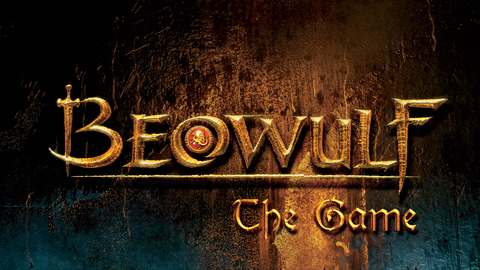The metrical romances:
The metrical romances began with the 12th-century revival in Literature. The old epic themes and native forms of verse were now rejected and there was a demand for a new kind of story-poem and rhyming measures which found its expression in the metrical romances of the times which brought to the public wonderful tales of brave knights, fair ladies, glorious adventures and courtly love. The romances which were highly influenced from French originals were thoroughly acclimatized. In the French originals of these romances, the lines were of definite length and meter whereas in England this metrical system came in contact with the uneven lines, the strong accent and alliteration of the native songs and the romances started being written in a variety of meters- both alliterative and rhyming.
The great romances of the medieval times were divided by Jean Bodel, a late 12th century trouve’re, into three main categories – “The matter of France”, “The matter of Britain” and the “The matter of Rome” to which an another division, “The matter of England” was added.
The matter of France deals with the heroic exploits of Charlemagne and his peers and they have their origin in the old chanson de geste. The chief of these carolovingian cycles is the Chanson de Roland, which celebrates the heroism of Roland against the Saracens. Other notable romances are Rauj Coilzear and Sir Ferumbras. These romances were immensely popular in the middle ages and have greatly influenced European Literature, especially the stories of Ariosto.
The matter of Rome, which borrows from classical antiquity, tells of the mighty exploits of Alexander the Great, the Trojan War, the siege of Thebes, the siege of Troy, the adventures of Aeneas and so on in a medieval setting. Thus, Alexander is presented as a medieval rather than an ancient hero. The value of these works is enhanced by the many details which are drawn from the English common life and by the lyrical passages that introduce the separate divisions of the poem. Noteworthy examples are King Alisaunder and the Destruction of Troy.
The matter of Britain brought forward a new kind of cycle of stories of French origin which linked the elevated view of sexual love first cultivated by the troubadours with the old Celtic Arthurian legends. Sir Tristrem, Arthur and Merlin, Ywain and Gawain and the Morte d’ Arthure are some of the best romances belonging to this cycle. The most interesting of all Arthurian romances are those of the Gawain cycle, especially Sir Gawain and the Green Night which exemplifies the knightly virtues of courage and truth. Sir Gawain combines French and Saxon elements together and is written in an elaborate stanza combining meter and alliteration.
The matter of England comprises of romances that sprung from the English soil and had a Viking atmosphere. They were preserved through French verses but were later translated or rendered in English. Of these romances, the most important ones are King Horn, Havelock the Dane, Guy of Warwick, Bevis of Hampton and so on. Guy of Warwick is one of the oldest, most popular romances consisting of the individual adventurous encounters of the hero.
In addition to the romances of these four matters, there are other miscellaneous romances on varying themes such as Floris and Blauchefleur, William of Palerne, Amis and Amiloun and so on which are equally charming.
The medieval romances indicate a passion for external beauty, ceremonials, courtly life, pageantry, magic, and marvel. They belonged to a world of abstractions and described a cosmopolitan society in which there is no definite place, time, politics and no problem of existence, the presence of the commonality or sense of nationalism. There is a marked lack of artistic finish as the long stories are unnecessarily complicated by intricate plots and digressions and the characterization is weak. Although, the spirited approach makes for good adventure stories which are important from the modern standpoint as they mark the beginning of English fiction and display an intimate knowledge of medieval craftsmanship and art.
The Alliterative revival:
The years 1350 to the early 15th century witnessed a remarkable revival or emergence of the Anglo-Saxon use of alliteration in verse which was a result of the reawakening of national consciousness and a renewed enthusiasm for the English tongue as an after-math of the victories of Edward III in France. This sudden apparition of an ancient form was more correctly a renewed flourishing of the form instead of a ‘revival’ as it had clearly evolved in an unbroken development from the old alliterative measures of Beowulf and Cynewulf.
Chaucer was a contemporary in the greatest production of the alliterative revival. William of Palerne is one of the earliest poems in the revived form whereas Piers the ploughman, Morte Arthure, The Destruction of Troy, The Parliament of Three Ages, Wynnere and Wastoure and much more are shining examples of the alliterative verse available in extant forms.
However, the most moving artistic product of the alliterative revival is a group of four poems found in the MS. Cott. Nero A x. namely Pearl, Patience, Purity or Cleanness and Sir Gawain and the Green Knight. The authorship of these poems is debatable although it is believed that they have been penned by the same author, most probably Hochoun.
Pearl is a delicate, compassionate and a sympathetic work of art of 1212 lines. It describes the dream of a distraught father, bereaved of his infant daughter, who seeks for her in an image of a pearl. The narrator is granted a vision of a dazzling maiden covered in white pearls who is actually his long lost daughter. His daughter-the maiden, who is now a virgin bride of Christ, shows him the vision of a celestial city of New Jerusalem. Pearl is not only a fore-runner of utopian writing about a perfect world but it is also an examination of human limitations and knowledge. The meter of Pearl is a stanza of twelve lines with four accents and a combination of rhyme and alliteration. Pearl enjoys a great place in Middle English religious poetry due to its sustained emotional quality and technical mastery of versification.
Patience in 531 lines retells the biblical story of Jonah and the whale and reinforces the virtue of Patience in a way that is both comical and instructive. Purity is a lengthy review of the scriptural stories that illustrate the vices opposed to “clannesse” by showing how impossible it is for the ones who are of an unclean character to approach God’s presence.
The “jewel of the medieval romance”, Sir Gawain and the Green Knight, is a brilliant Arthurian legend of 2530 lines which are arranged in 101 stanzas of unequal length, each of which contains a number of long alliterative lines followed by fine short lines that rhyme alternately. This masterpiece has one chief adventure which is the beheading challenge thrown by the Green Knight and accepted by Sir Gawain. This poem offers a series of contrasts which questions values of knighthood and heroism while exploring aspects of morality that are not merely sexual. It brings human weaknesses to the fore but in the end, ironically reinforces belief in human capacities as it is because of Gawain’s failure owing to his cowardice and treason that he discovers his fullest humanity and the truest test of his knightly integrity. The charm of this romance lies in the arresting descriptions of wild nature, hunting scenes, armors, woodcraft, and architecture. It is a work of art dominated by high ethical ideals.
Nothing can be ascertained about the authorship of these poems so it is safe to consider all these poems as literary remains of several alliterative poets who flourished somewhere in the north-west during the mid fourteenth and the early fifteenth century. The best alliterative verses had the potential of extraordinary grip and aesthetical power and were supported by many audience members and readers. However, alliterative poetry gradually disappeared due to lack of genuine support, patronage, and preservation.
Some online learning platforms provide certifications, while others are designed to simply grow your skills in your personal and professional life. Including Masterclass and Coursera, here are our recommendations for the best online learning platforms you can sign up for today.
The 7 Best Online Learning Platforms of 2022
- Best Overall: Coursera
- Best for Niche Topics: Udemy
- Best for Creative Fields: Skillshare
- Best for Celebrity Lessons: MasterClass
- Best for STEM: EdX
- Best for Career Building: Udacity
- Best for Data Learning: Pluralsight
















